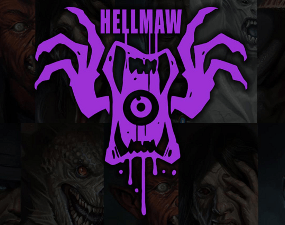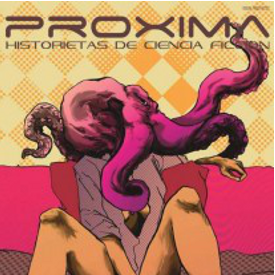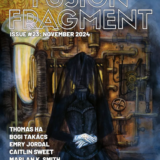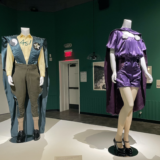This is part two of Eric Gustafson’s guest post for me on covers. It’s a huge topic, and even if you aren’t responsible for your own covers, you should understand how a bad cover can tank your book, and fight for a better one. You can find Eric here, to ask questions and check out his artwork. (Part 1 is here.)
The aesthetic avoidance of all things art
 There are times you may be better off without art. But let’s get this straight: that shouldn’t be just because you can’t afford to get a great artist, or because you had to do the art yourself. Great art isn’t necessarily what the reader is looking for on a cover, although a masterpiece certainly doesn’t hurt. When it comes to painting, J.R.R. Tolkien was no Michael Whelan, but so what? His own paintings for The Hobbit, naïve as they might have been, were careful and colorful evocations of his magic world. You could feel the love that went into them, and the joy that executing the paintings must have brought to him. Any of his paintings would make a fantastic cover for a Tolkien book.
There are times you may be better off without art. But let’s get this straight: that shouldn’t be just because you can’t afford to get a great artist, or because you had to do the art yourself. Great art isn’t necessarily what the reader is looking for on a cover, although a masterpiece certainly doesn’t hurt. When it comes to painting, J.R.R. Tolkien was no Michael Whelan, but so what? His own paintings for The Hobbit, naïve as they might have been, were careful and colorful evocations of his magic world. You could feel the love that went into them, and the joy that executing the paintings must have brought to him. Any of his paintings would make a fantastic cover for a Tolkien book.
Remember: Grandma Moses was a celebrated artist. Honesty was her gig, not slick pizzazz. What the reader wants to see is art done by somebody who *gets* it. Your book is earthbound, or spans the heavens. There are many ways to convey that.
We all “think without thinking”. The premise of Malcolm Gladwell’s Blink is that we often know an awful lot in an instant, sometimes without really knowing exactly why. A fraudelent statue, for example, is authenticated in every possible way, except one expert looks at it and just *knows* that something isn’t right, somehow. And it turns out that the one suspicious expert was right–the examinations had all been thwarted, but his intuition was on target.
This will sometimes be the potential reader’s reaction to your indie book cover: “Wait a minute. Something just isn’t–*right* with this, somehow.”
Sometimes it’s awfully easy to pick out the book cover monstrosities. For Amazon Kindle, there are a range of unauthorized editions of the works of Edgar Rice Burroughs, many with outrageously offensive cover choices: Huckleberry Finn on the cover of The Lost Continent; The Mad King as some sort of autoerotic masquerade ball; and yet another cover that spells the master’s name out in big, bold letters: BURROGHS.
If you know your ERB, you know this stuff’s rotten. These were slapped together by some goofballs trying to make a buck on Amazon, regurgitating some electronic text that they likely grabbed from some other source, like Project Gutenberg.
Yet Frank Frazetta’s covers weren’t exactly faithful to the books, either. As far as I could tell, growing up, every book by Burroughs featured incredibly voluptuous women wearing hardly any clothes at all. But they were nowhere to be found in the text. Honest, I looked! But Frazetta’s cover paintings are revered. What’s wrong with the rotten covers on Amazon isn’t that they failed to slavishly address the particular details of the book, but rather that you can tell at a glance that the people who did the covers just didn’t really give a toss. Frazetta, on the other hand, *loved* the other worlds Burroughs created, even if he was compelled to goose them a little.
This brings us to *your* book. Did your artist give a toss? If you did the art, did you give a toss? Or did you get sidetracked while fussing over a big art project that you didn’t really enjoy doing, and that just left you frustrated? Better make sure–your reader will know, at a glance. They’re not looking for accuracy, since they haven’t even read the book, yet. But what they will see beyond the competence of the art is whether the story inspired the artist. You can’t measure it. But just look at it. You should be able to tell at a glance if your artist was inspired by what you wrote. Even if the artist is you.
Your art doesn’t have to be a great painting. It could be a close-up of spaceship schematics that you drew yourself, when planning your book. It could be a cut-out collage of simple colors forming a spaceman holding a rose. Attacked by cut-out space squid tentacles. Always look beyond the ordinary in order to show your love.
In any case, your ebook thumbnail is valuable real estate. Use it well; don’t cram stuff into it, just because you feel that you’re supposed to cram every thing under the sun into it. Edit the idea, cut away the extraneous. As with your book, that attention is how you show that you care.
Eric Gustafson is a sort of dabbler in humor, writing, art, and comics. Believe it or not, he has a blog and has recently begun painting book covers.











I love how delightfully discordant science fiction novel covers are from the material inside. They’re a whole other story, inspired by the one you’re about to read! Wojciech Siudmak is one of my favorite offenders ^,^